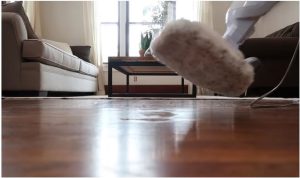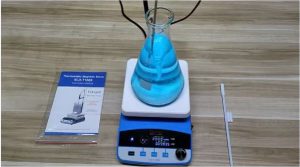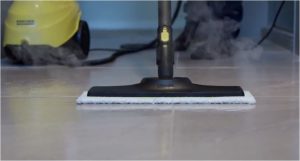Does Steam Cause Damage to Hair? Yes & No
Steam can cause damage to hair, particularly if used excessively or at too high a temperature. Steam treatments are a popular choice for individuals looking to improve the health and appearance of their hair.
Steam can have both positive and negative effects on hair, depending on how it is used and the individual’s hair type and condition. When used correctly, steam can provide benefits such as promoting hair growth, enhancing moisture retention, and aiding in the absorption of hair treatments. However, excessive or improper use of steam can lead to damage and dryness.
Hair steaming is a popular technique used to improve hair health and stimulate growth. It involves applying steam to the hair and scalp, which helps to open up the hair cuticles and allows for better penetration of products. This can be particularly beneficial for individuals with dry or damaged hair, as it helps to hydrate and nourish the strands.
While occasional steaming can be beneficial, steaming hair every day can strip the hair of its natural oils and lead to dryness. It is recommended to steam hair once or twice a week, depending on your hair’s needs and condition.
To maximize the benefits of steaming and minimize the risk of damage, it is essential to follow a few guidelines.
- Make sure to use a suitable hair steamer or create a DIY steam setup at home.
- Avoid exposing your hair to excessive heat during the steaming process to prevent heat damage.
- Always follow up with a deep conditioning treatment or moisturizer after steaming to seal in the moisture and nutrients.
The Science Behind The Effects Of Steam On Hair.
Hair is made up of three layers: the medulla, cortex, and cuticle. Steam penetrates the hair cuticle, the outermost layer of our hair strands. When exposed to high temperatures, the hair cuticles can lift, causing hair to become frizzy and dry.
Moreover, steam can impact the hair’s elasticity and strength by altering the hair’s protein structure. This can lead to hair breakage and damage in the long run. Ultimately, when it comes to the impact of steam on hair, maintaining a balance is key.
It’s crucial to avoid hair damage by not overexposing your hair to steam yet, simultaneously, providing enough moisture to maintain healthy-looking locks.
Read More: Can You Put Vinegar in a Shark Steam Mop?
Is It Necessary to Wash Hair After Steaming?
Deciding whether to wash hair after steaming depends on the individual’s hair type, the products used, and personal preferences. Steaming opens up the hair cuticles, allowing for better absorption of moisture and nutrients.
Rinsing hair with cool water after steaming is often recommended to seal the cuticles and lock in the moisture, helping maintain the benefits of the steaming process and prevent damage from external factors.
If a deep conditioner or hair mask has been applied during the steaming process, washing the hair afterward may be necessary to remove any residue.
In such cases, using a gentle, sulfate-free shampoo can help cleanse the hair without stripping away the moisture and nutrients gained from steaming.

How to Steam Your Hair at Home?
Steaming hair at home can be a simple and cost-effective way to improve hair health. Follow these steps for an effective at-home steaming session:
1. Start by washing your hair with gentle shampoo and conditioning as usual.
2. Apply a deep conditioner or hair mask evenly throughout your hair, focusing on the ends.
3. Cover your hair with a shower cap or plastic wrap to trap heat and moisture.
4. Use a hair steamer or create a DIY steamer by soaking a towel in hot water, wringing out the excess, and wrapping it around your head.
5. Allow the steam to penetrate your hair for 15-30 minutes, depending on your hair’s needs.
6. Rinse your hair with cool water to seal the cuticles and lock in the moisture.
7. Style your hair as desired, and enjoy the benefits of steamed hair.
Learn More: Steaming Cooking Method: Healthy and Delicious
Pros and Cons of Hair Steaming
Hair steaming offers several advantages and disadvantages that should be considered before incorporating it into your hair care routine.
Pros:
1. Increased moisture retention: Steaming helps open the hair cuticles, allowing for better absorption of moisture and nutrients.
2. Improved hair elasticity: The added moisture from steaming can improve hair elasticity, reducing breakage and promoting healthier hair.
3. Enhanced nutrient absorption: Steaming can help hair products penetrate deeper into the hair shaft, maximizing their benefits.
Cons
1. Potential damage from excessive heat: Over-steaming or using too high temperatures can cause damage to the hair strands.
2. Over-moisturizing: Steaming hair too frequently can lead to over-moisturizing, which may weaken the hair and cause breakage.
3. Time-consuming: Steaming hair can be a time-consuming process, especially if done at home.
FAQs
When can you steam your hair?
You can steam your hair once a week or every two weeks, depending on your hair’s needs. Steaming too frequently may lead to over-moisturizing and potential damage, so it’s essential to find the right balance for your hair type.
What should you do after steaming your hair?
After steaming your hair, rinse it with cool water to seal the cuticles and lock in the moisture. This helps maintain the benefits of the steaming process and prevent damage from external factors.
Are hair steamers good for your hair?
Yes, hair steamers can be beneficial for your hair when used correctly. They help open the hair cuticles, allowing for better absorption of moisture and nutrients, which can lead to improved hair growth and overall hair health.
Should you shampoo after steaming your hair?
If you’ve applied a deep conditioner or hair mask during the steaming process, you may need to shampoo your hair afterward to remove any residue. Use a gentle, sulfate-free shampoo to cleanse the hair without stripping away the moisture and nutrients gained from steaming.
How often can you steam your hair?
It’s recommended to steam your hair once a week or every two weeks, depending on your hair’s needs. Steaming too frequently may lead to over-moisturizing and potential damage.
Does hair steaming reduce dandruff?
Hair steaming can help reduce dandruff by providing much-needed moisture to the scalp and hair. The increased moisture can alleviate dryness and flakiness, which are common causes of dandruff.
What are the disadvantages of steaming hair?
Some disadvantages of steaming hair include potential damage from excessive heat or over-steaming, over-moisturizing, and the time-consuming nature of the process. To minimize these risks, it’s essential to steam your hair correctly and in moderation.





